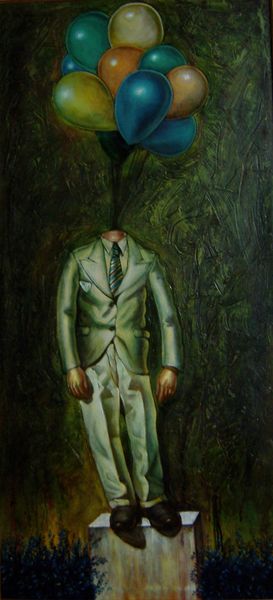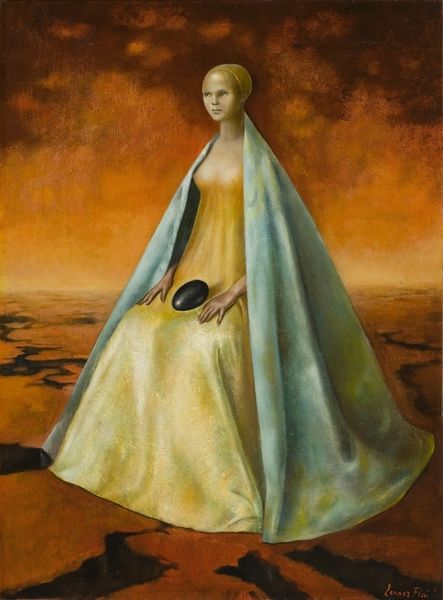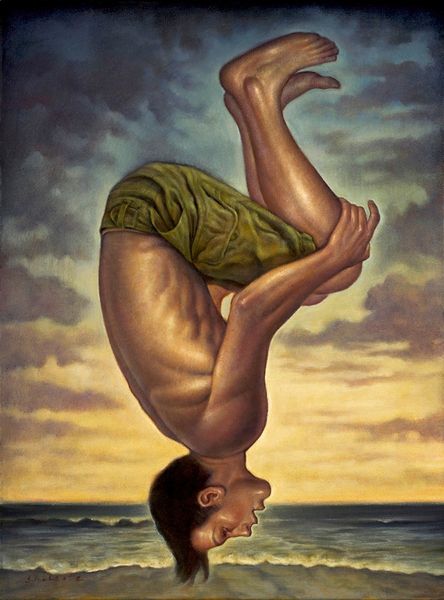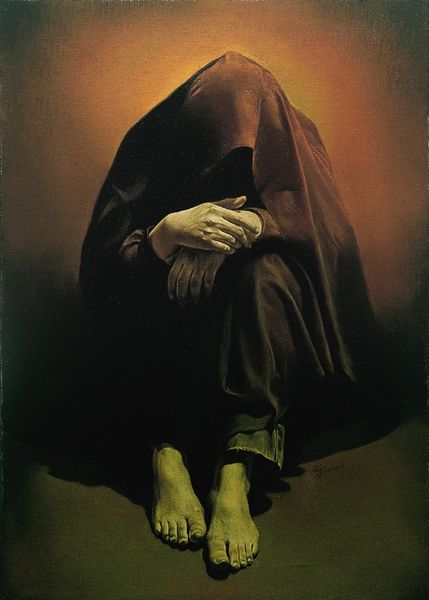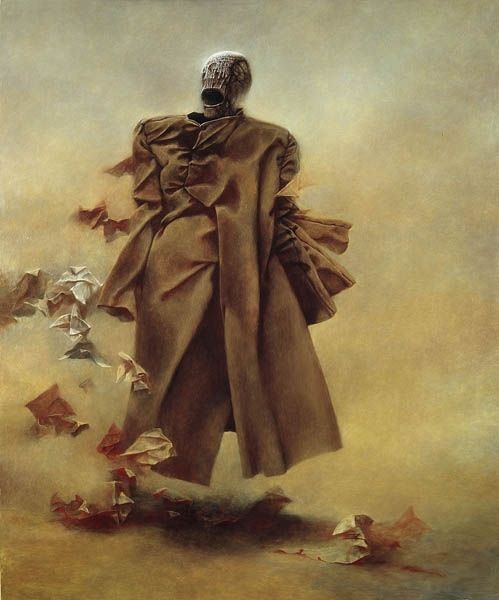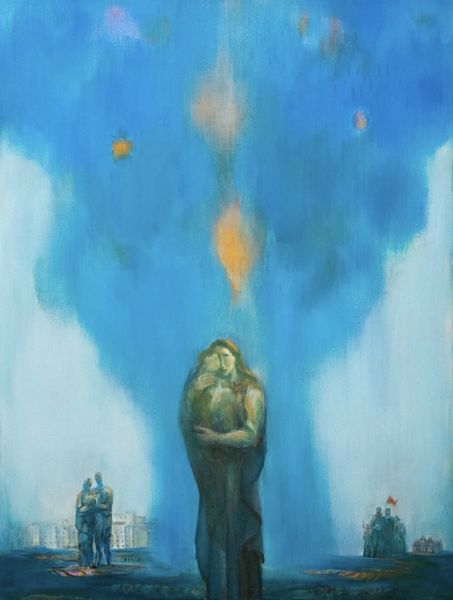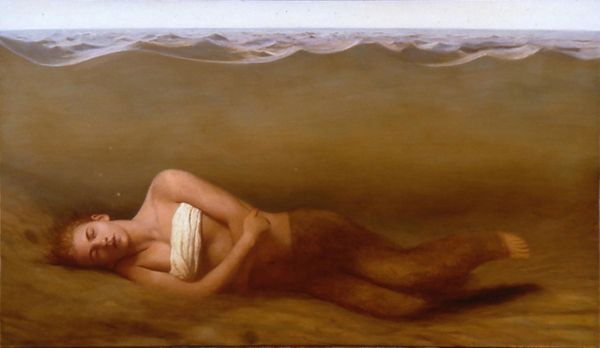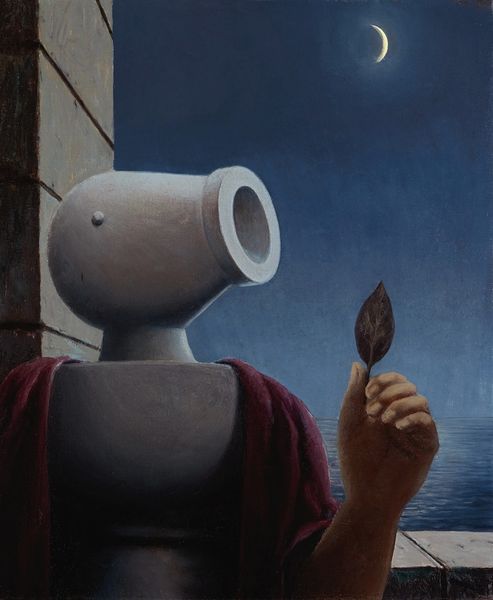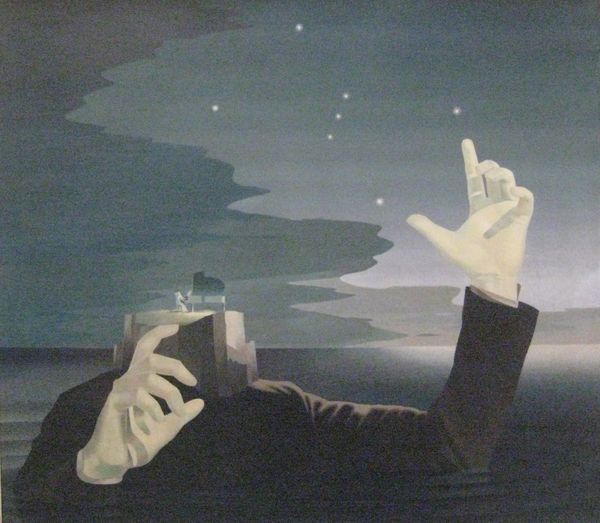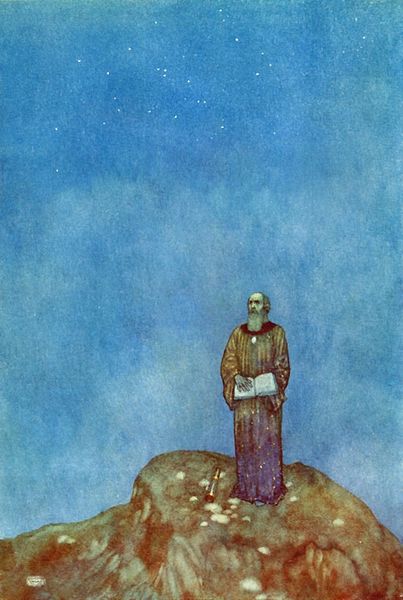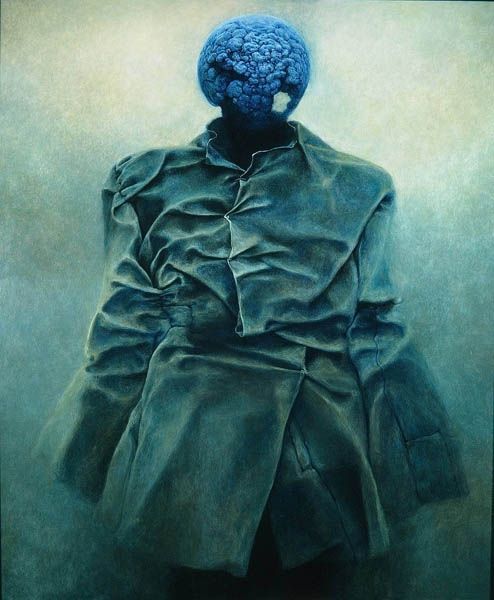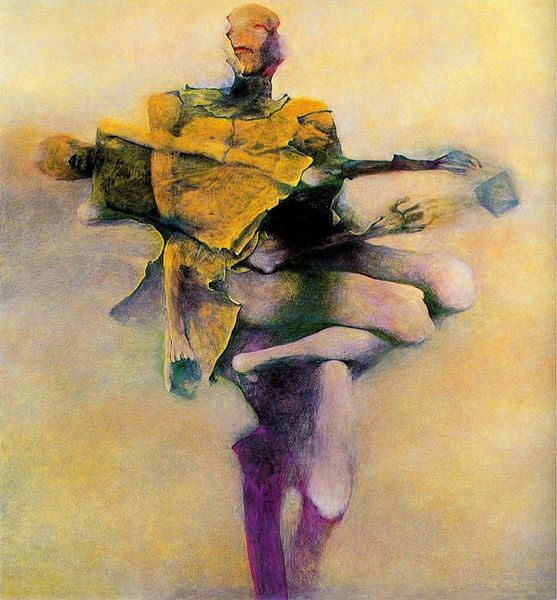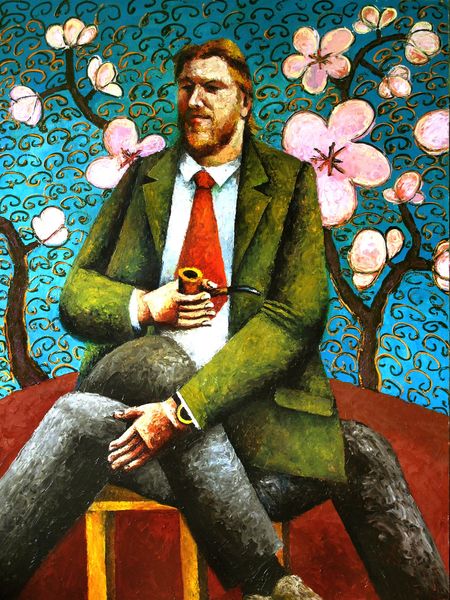
oil-paint
#
portrait
#
oil-paint
#
genre-painting
#
portrait art
#
realism
Copyright: Guntis Strupulis,Fair Use
Curator: Guntis Strupulis painted this oil on canvas in 1972; it is a self-styled portrait titled "Mākslinieka Alda Kļaviņa portrets," or "Artist Aldis Kļaviņš’ Portrait." Editor: What strikes me first is the confident absurdity. A portrait that reads as almost allegorical with that operatic cape flowing in a non-existent wind! Is he a hero, a prophet, or just someone feeling the breeze? Curator: I read it as emblematic of the artist's identity—the romantic painter at the edge of the world. The cape certainly operates on a symbolic level. Green is often associated with creativity, nature, but also jealousy... Editor: Yes! I read it as an intersection of isolation and performative self-fashioning. This image toys with masculinity in ways that resonate even now. He stands at the edge of a cliff and yet also carefully contemplates something in his hands... what's in that golden box? Curator: Well, that golden box! The form references a reliquary perhaps, or a container for sacred artistic tools. The detail draws my eye as a source of creative energy and even magic. It might reference a deeper personal mythology of the artist. Editor: Or the promise of it! Look how the horizon mimics a stage backdrop! The entire scene feels like an invitation to consider the construction of artistic genius, rather than genius itself. Does the sea evoke the expanse of possibility or just reflect his mood? Curator: The sea can symbolize the subconscious, the infinite—elements that artists have always drawn from. This particular tone, though, evokes a cool detachment. Note how the wind lifts his cape but doesn't seem to affect his hair. Everything is very carefully staged. Editor: Exactly. And it's through those little staged ironies that the work generates dialogue between artistic persona and artistic person, and perhaps critiques of the same. What's radical to me is how the image feels fresh in its questioning, decades later. Curator: Yes, despite the visual cues of a past era, it remains relevant by provoking reflection on the artist and the relationship to art. I find the layering of possible meanings makes the portrait deeply engaging and rather memorable.
Comments
No comments
Be the first to comment and join the conversation on the ultimate creative platform.
